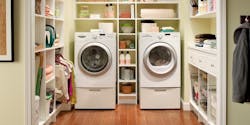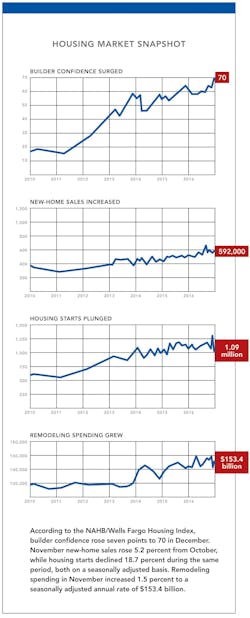Homebuyers Choose Amenities Over Size
The average size of newly built homes decreased in 2016, indicating that the home building industry is preparing for the coming wave of first-time buyers as Millennials begin to dip their toes into the market, according to research and survey results recently released by NAHB.
In 2015, the typical new home had 2,689 square feet. In 2016, it dropped to 2,634, U.S. Census data show. That’s the first drop in size since 2009, says Rose Quint, NAHB’s assistant vice president for survey research. In addition to the Census data, Quint used NAHB’s Home Buyer Preferences survey. The survey findings were announced in January at the International Builders’ Show in Orlando.
“The data on new home characteristics show a pattern,” Quint says. “2016 marked the end of an era that began in 2009 when homes got bigger and bigger with more amenities. I expect the size of homes to continue to decline as demand increases from first-time buyers.”
These homes must include specific amenities. Just as in 2015, a separate laundry room still tops the list of must-haves across all income groups. Energy-efficient features such as low-E windows, Energy Star–rated appliances, ceiling fans, and programmable thermostats are also at the top of buyers’ wish lists. Homebuyers want their homes to include a patio, exterior lighting, and a full bath on the main level.
Not as popular among buyers in 2017: cork flooring and solar and geothermal energy, as well as features such as pet-washing stations, outdoor kitchens, and sunrooms. “Builders are not going to include them in the average home,” according to Quint.
A majority of homebuyers prefer a new home to an existing one, and 65 percent want that home to be in the suburbs. Size preference goes up as income goes up, with buyers in the $150,000-plus income bracket preferring homes just under 2,500 square feet.
No matter what the income, buyers overwhelmingly prefer a smaller house with more features and amenities over sheer size. “More than two-thirds are willing to trade size for high-quality products and features,” Quint says.
(Click charts to enlarge)

